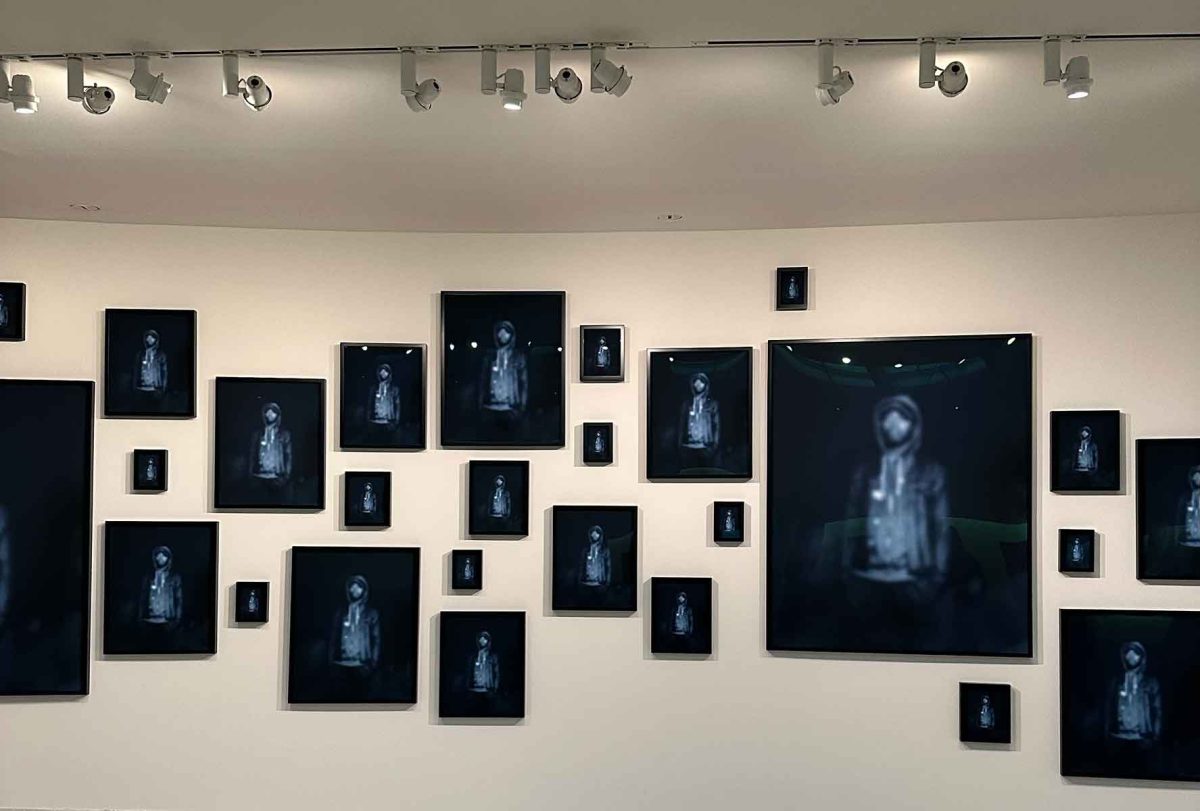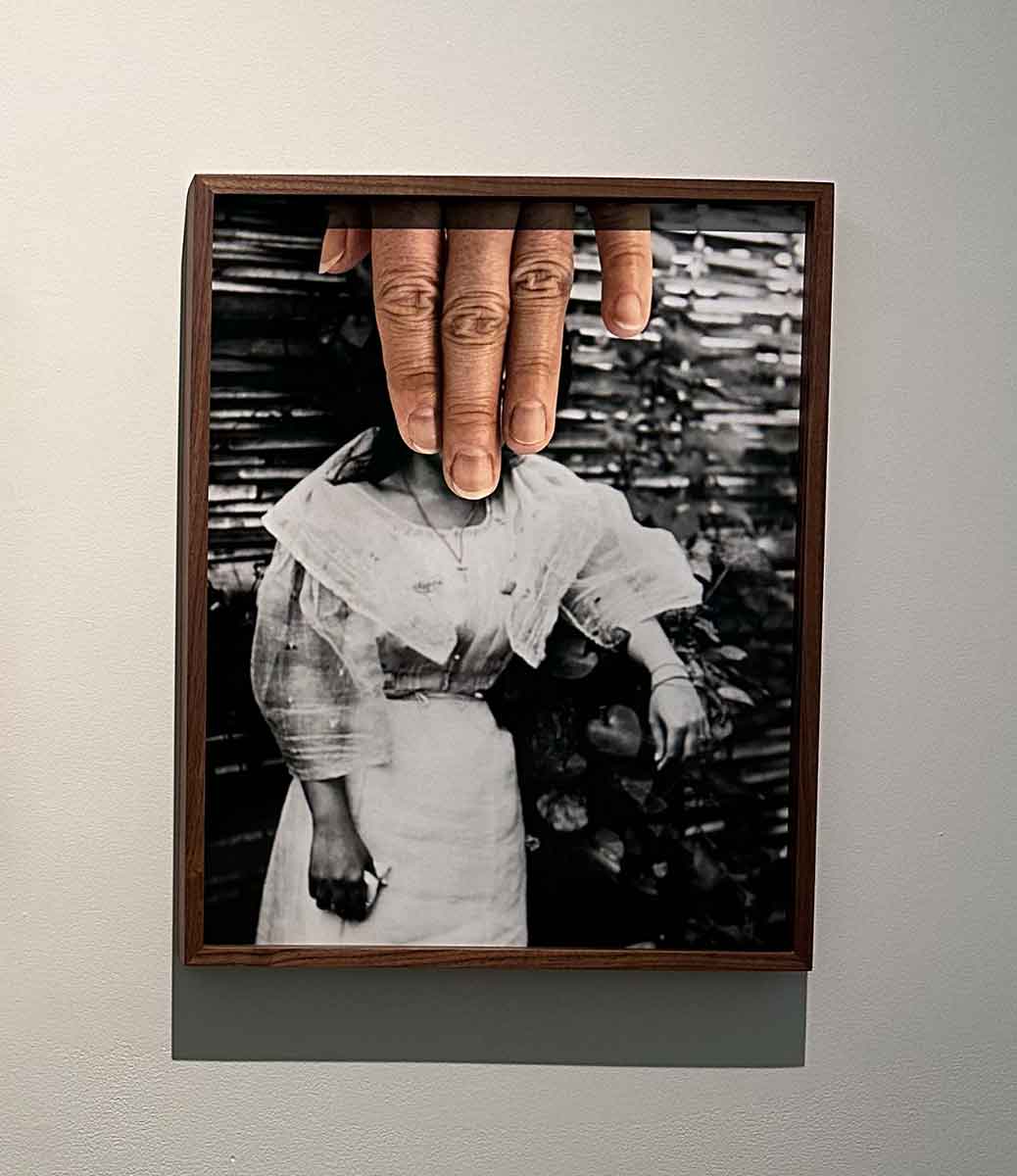
“Going Dark: The Contemporary Figure at the Edge of Visibility”
EXHIBITION ON VIEW
October 20th, 2023 to April 7th, 2024
THE SOLOMON R. GUGGENHEIM MUSEUM
1071 5th Ave New York, NY 10128
“Going Dark: The Contemporary Figure at the Edge of Visibility”, an exhibition focusing on the meaning behind being seen, unseen, or erased in society features paintings, photographs and videos by different artists. The exhibition is currently on view at The Guggenheim Museum and features work from twenty eight artists including: American Artist, Kevin Beasley, Rebecca Belmore, Dawoud Bey, John Edmonds, Ellen Gallagher, David Hammons, Lyle Ashton Harris, Tomashi Jackson, Titus Kaphar, Glenn Ligon, Kerry James Marshall, Tiona Nekkia McLodden, Jori Minaya, Sandra Mujinga, Chris Ofili, Sondra Perry, Farah Al Qasimi, Faith Ringgold, Doris Salcedo, Lorna Simpson, Ming Smith, Sable Elyse Smith, Stephanie Syjuco, Hank Willis Thomas, WangShui, Carrie Mae Weems and Charles White.
The works on display in “Going Dark”, occupying all six levels of the Guggenheim’s rotunda, are based on a duality: the art simultaneously showcases and hides the body, positioning it at the “edge of visibility”. The exhibition presents works across all media, including paintings, photographs, drawings, prints, sculptures, videos and installations. Through revealing and concealing the body, “Going Dark” probes a critical point of conflict in representation; the desire to be seen and the need to be hidden.
Walking through the exhibition, the viewer gets a good sense of what it means to “go dark”; going dark is a method that was used by the artists on display to address urgent questions regarding recognition in society, or lack thereof. The artists “go dark” by ways of incorporating shadowing and other lighting techniques into their pieces, reconfiguring the body, using different printing methods, or using postproduction tools such as the green screen or chroma-key that enhance the blurring or brightening of the pieces.

In some of the works on display, the disappearing figure reflects a state of invisibility imposed upon an individual by outside forces, such as Ming Smith’s “Invisible Man” photo series which depict the precarious state of Black lives in post-recession Harlem. In others, such as in Sandra Mujinga’s “Democratic Republic of the Congo” series, concealment represents a self-imposed form of invisibility, understood as an escape chosen by an individual that suggests a power in withdrawing from full view, especially as a response to ever-evolving surveillance technologies. The artists experimentally manipulate colors and light in their works to shade both social and optical perception while also challenging the abilities of how the eye sees through revealing and concealing the body.

Featured Artists:
Faith Ringgold, Charles White & David Hammons were American artists from the 1960-70’s, who contributed to the development of conceptual art. They launched new pathways of expression, laying the groundwork for artists tackling the edge of visibility today.
Ming Smith & Faith Ringgold were two Black female artists who introduced themes of the exhibition in their work, particularly through their discrete conceptual series; Invisible Man and Black Light, respectively. While the aim of each series is unique and comprises different media, the important commonality is found under the meaning of “going dark”, where each artist examines the visibility and value of Black life through formal experiments using light, shadows and the color black.

Kerry James Marshall, Titus Kaphar & Sable Elyse Smith’s works are among the first to present invisibility as both a formal and social concern. In the past two decades, these artists have shown particular interest in sites of incarceration as seen in Titus Kaphar’s ghostly profiles and Sable Elyse Smith’s monochrome reductions. Recurring investigations by artists into erasure in society have pointed to the perpetual diminishment that continues to define the lives of many people, especially in the Black community.

Lorna Simpson, Sondra Perry, Farah Al Qasimi & Sandra Mujinga all present works that smudge and estrange the body by hacking the capacities of the chroma-key or green/blue screen. These artists’ works brings the idea of play to the forefront of going dark. Through the use of effusive color and patterns, the artists remind viewers that within the partially obscured lies the potential for pleasure.




